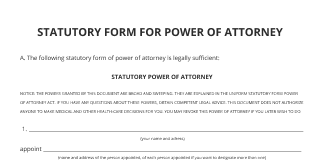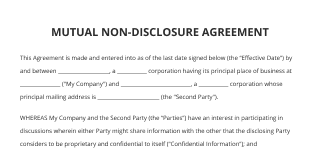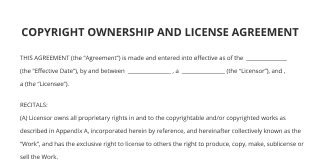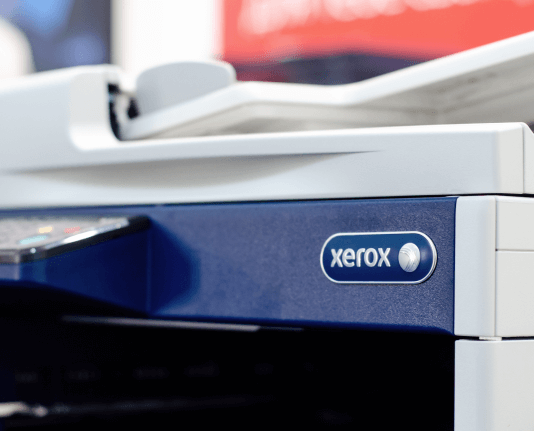Understanding the Sales Order and Invoice Difference for Streamlined Transactions
Move your business forward with the airSlate SignNow eSignature solution
Add your legally binding signature
Integrate via API
Send conditional documents
Share documents via an invite link
Save time with reusable templates
Improve team collaboration
See airSlate SignNow eSignatures in action
Understanding Sales Orders
A sales order is a document created by a seller to confirm the sale of goods or services to a buyer. It serves as an official record of the transaction and outlines the specifics of the order, including item descriptions, quantities, prices, and payment terms. Sales orders are crucial for inventory management and help ensure that both parties have a clear understanding of the transaction details.
When a customer places an order, the seller generates a sales order to track the order's progress, manage inventory levels, and facilitate the fulfillment process. This document is typically used in business-to-business transactions and can be created and sent digitally for efficiency.
Defining Invoices
An invoice is a formal request for payment issued by a seller to a buyer after goods or services have been provided. It includes essential details such as the seller's information, buyer's information, a list of products or services provided, total amount due, payment terms, and due date. Invoices serve as a financial record for both parties and are crucial for accounting and tax purposes.
Invoices are usually generated after a sales order has been fulfilled. They indicate that the seller expects payment for the goods or services rendered, making them an essential part of the sales process.
Key Differences Between Sales Orders and Invoices
While both sales orders and invoices are important documents in the sales process, they serve distinct purposes:
- Timing: A sales order is created before the goods or services are delivered, while an invoice is issued after the delivery.
- Purpose: Sales orders confirm the details of an order, whereas invoices request payment for completed transactions.
- Content: Sales orders focus on order specifics, while invoices detail payment information and terms.
When to Use Sales Orders
Sales orders are typically used in scenarios where businesses need to manage inventory and track orders effectively. They are particularly useful for:
- Large or complex orders that require detailed tracking.
- Business-to-business transactions where formal documentation is necessary.
- Situations where inventory levels must be monitored closely.
When to Use Invoices
Invoices are essential for ensuring timely payment and maintaining accurate financial records. They are commonly used when:
- Goods or services have been delivered, and payment is due.
- Businesses need to document transactions for accounting purposes.
- Establishing payment terms and deadlines is necessary for cash flow management.
Integrating Sales Orders and Invoices in Digital Workflows
Using digital tools like airSlate SignNow can streamline the creation and management of sales orders and invoices. Businesses can prepare and send these documents quickly and securely, ensuring that all parties have access to the necessary information. By digitizing these processes, companies can enhance efficiency, reduce errors, and improve overall productivity.
For example, businesses can create customized sales orders to reflect specific customer needs and generate invoices automatically once the order is fulfilled. This integration helps maintain a smooth workflow and supports better financial management.
airSlate SignNow solutions for better efficiency
Our user reviews speak for themselves






Why choose airSlate SignNow
-
Free 7-day trial. Choose the plan you need and try it risk-free.
-
Honest pricing for full-featured plans. airSlate SignNow offers subscription plans with no overages or hidden fees at renewal.
-
Enterprise-grade security. airSlate SignNow helps you comply with global security standards.

Comprehending the distinction between sales orders and invoices
In the realm of business dealings, grasping the difference between sales orders and invoices is essential for proficient financial oversight. This guide will lead you through the advantages of utilizing airSlate SignNow, a robust tool designed to ease document signing and management.
Examining the sales order and invoice distinction with airSlate SignNow
- Launch your web browser and head to the airSlate SignNow website.
- Establish a free trial account or log in if you already possess one.
- Choose the document you intend to sign or send out for signatures.
- If you anticipate reusing this document, save it as a template for later use.
- Access your document to perform necessary modifications, such as adding fillable fields or inserting specific details.
- Affix your signature to the document and add signature fields for the recipients.
- Select 'Continue' to set up and dispatch an eSignature invitation.
airSlate SignNow delivers an impressive return on investment with its comprehensive features designed for small to medium-sized enterprises. Its intuitive interface facilitates easy scaling, ensuring that businesses can evolve as they expand.
With clear pricing and no concealed charges, airSlate SignNow offers outstanding 24/7 support for all paid plans. Begin optimizing your document procedures today!
How it works
airSlate SignNow features that users love
Get legally-binding signatures now!
FAQs
-
What is the difference between a sales order and a proforma invoice?
A Proforma Invoice is the first invoice a seller sends to a buyer. It shows the estimated cost of goods or services before the transaction occurs. A Sales Order is a document a buyer uses to request goods or services from a seller. It demonstrates the buyer's commitment to purchasing these items. -
Which comes first, sales order or invoice?
invoice battle, the sales order is the first document a business creates. The invoice is generally issued at the end of a transaction. -
Can I use a sales order as an invoice?
Once you've created a sales order and sent the items to your customers, you might want to create an invoice for the same. You can directly convert a sales order into an invoice. -
What is the purpose of a sales order?
Sales orders help businesses manage inventory, track revenue, and ensure accurate order fulfillment. Sales orders play a crucial role in supply chain management, particularly in industries such as manufacturing, retail, wholesale distribution, and e-commerce.
What active users are saying — sales order and invoice difference
Related searches to Understanding the sales order and invoice difference for streamlined transactions
Get more for sales order and invoice difference
- Streamline your workflow with online document signing
- Effortless document submission that elevates your business
- Streamline your electronic signature delivery with airSlate SignNow
- Email a document for signing made simple
- Email contract for signing made simple and efficient
- Email document for free electronic signature with airSlate SignNow
- Effortless emailing signed documents with airSlate SignNow
- Execute electronically with airSlate SignNow for seamless document management
Find out other sales order and invoice difference
- Unlock the Legitimacy of Online Signatures for Your ...
- Maximize Online Signature Legitimateness for Freelance ...
- Enhance Your Freelance Contracts with Legitimate Online ...
- Online Signature Legitimateness for Freelance Contract ...
- Achieve Online Signature Legitimateness for Freelance ...
- Online Signature Legitimateness for Temporary ...
- Enhance Temporary Employment Contracts in Australia ...
- Experience the Legitimacy of Online Signatures for ...
- Unlock the Power of Online Signature Legitimateness for ...
- Ensuring Online Signature Legitimateness for Temporary ...
- Unlock the Power of Legitimate Online Signatures for ...
- Unlocking Online Signature Legitimateness for Temporary ...
- Unlock the Power of Online Signature Legitimateness for ...
- Online Signature Legitimateness for Temporary ...
- Boost Recruitment Proposal Legitimacy with Online ...
- Online Signature Legitimateness for Recruitment ...
- Online Signature Legitimateness for Recruitment ...
- Boost Recruitment Efficiency with Legitimate Online ...
- Boost Your Recruitment Proposal Legitimacy in Canada ...
- Unlock the Power of Online Signature Legitimateness for ...






























